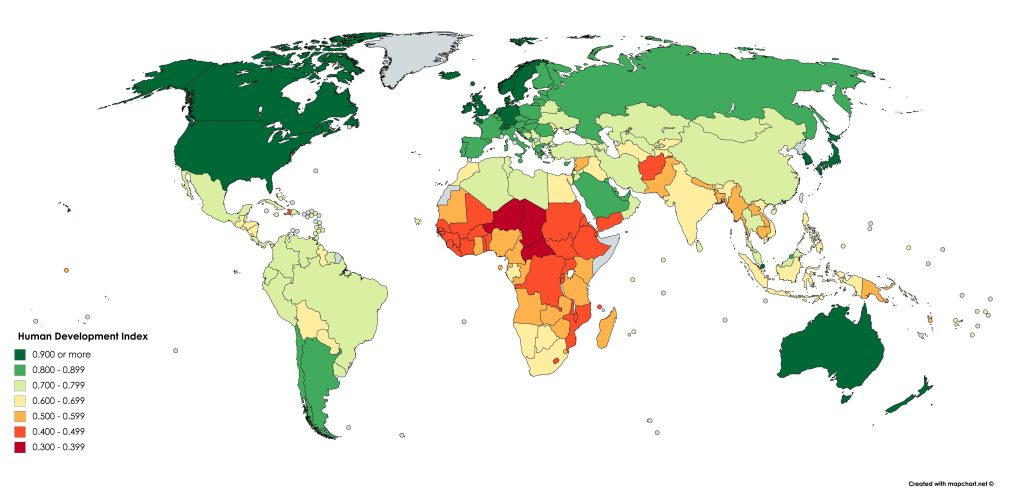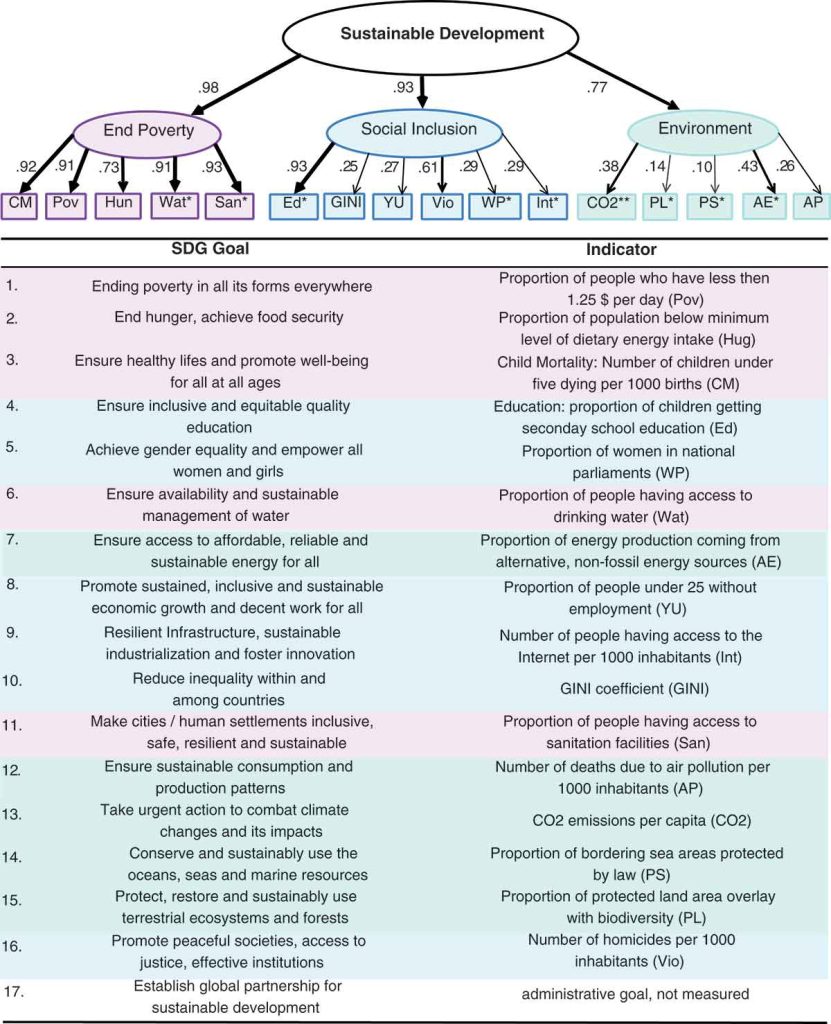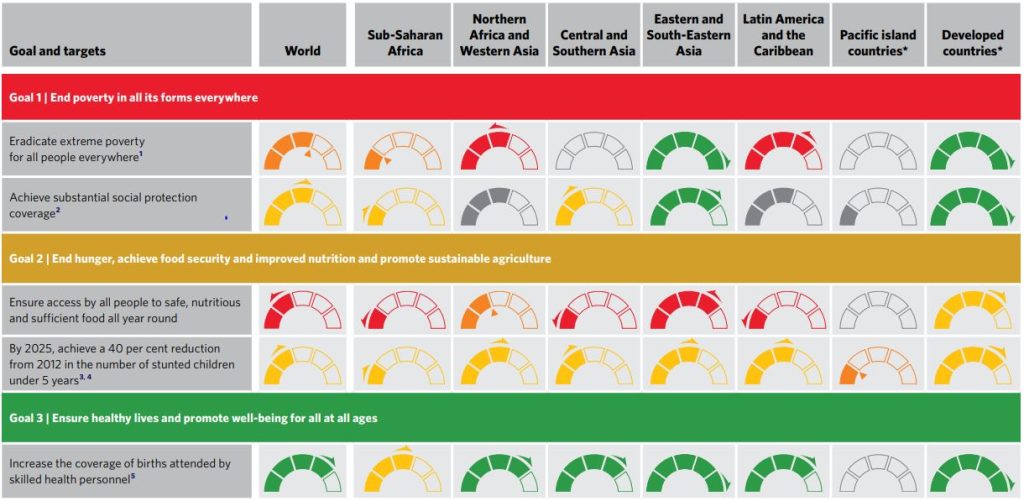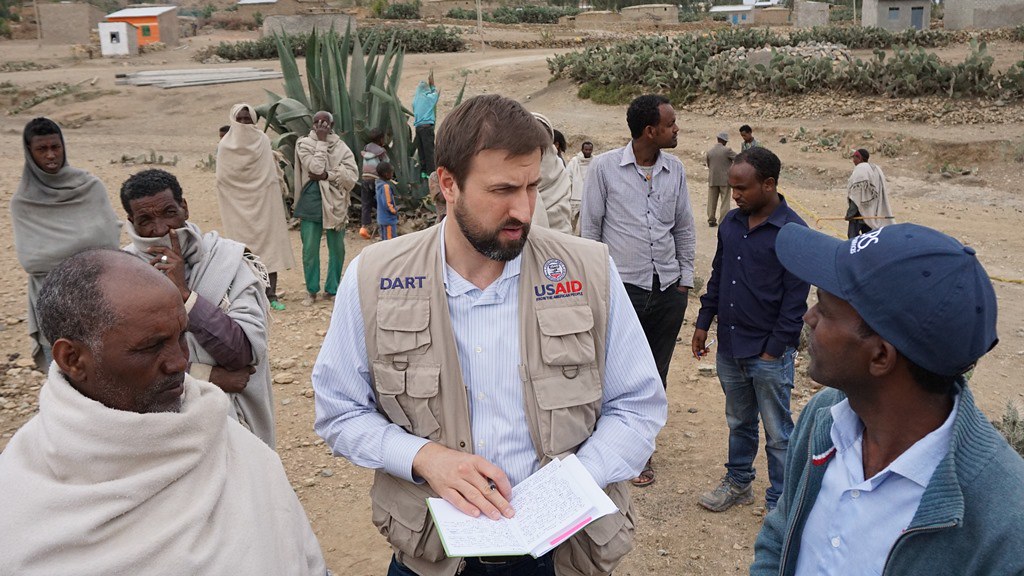In essence, sustainable development is a commitment to ensuring global human well-being, and economic progress, whilst protecting the planet. Imagine the world as a system of intricate, interlinked machineries that work in harmony with each other, and with nature. When an unequal pace of development happens, the harmony breaks, and the system is thrown into disarray.
In the real world, that disarray manifests itself in the growing challenges faced by humankind – climate change, water scarcity, hunger, poverty, and unrest. A global problem that calls for a global solution. And only when we reduce the inequalities between the rich and the poor, can we hope to restore harmony, and make the planet better for all of us.
What are developing nations?
By definition, developing countries have a lower quality of life, income, economic development, and industrial growth than the global average. Moreover, they are vulnerable to social, economic, and environmental issues – all of which harm their quality of life. Even though they may have faced issues that are similar to developed countries, the impacts on them are often more severe.
The Human Development Index (HDI) measures a country’s economic development, life expectancy, health, education, and quality of life. According to the United Nations and the HDI, countries with an HDI rating of less than 0.8 are classified as underdeveloped, or still developing. By that standard, there are 122 nations still developing, and are in need of support to develop sustainably.

Why are there developing nations?
There are many theories on why unequal development is still persistent in this day and age. However, these are the main drivers that slow or prevent development:
- Access to education. Education determines a country’s level of prosperity. It has a crucial role in health, equality, and poverty. Thus, a lack of education can often hinder economic growth.
- Climate change. Developing countries are adversely affected by climate change. It increases the frequency and intensity of extreme weather conditions, reduces food security, and worsens world hunger and poverty.
- Corruption. It is argued that poverty drives corruption while corruption fuels poverty. According to the United Nations, corruption in a nation’s government “undermines democratic institutions, slows economic development and contributes to governmental instability”.
- Gender discrimination and inequality. Evidently, many of the poorer countries in the world are those that offer girls and women fewer rights. There is a direct relationship between unequal women rights and poverty.
- Health Epidemics. Unlike wealthier countries, lower-income countries are more susceptible to long-term impacts from epidemics. The most recent example would be the COVID-19 pandemic which has compelled the rate of extreme poverty.
Sustainable Development – A Snapshot
Before the publication of Limits to Growth (1972), there were no studies on the effects of endless economic growth on the environment. In 1987, the United Nations released the Bruntland Commission Report (also known as Our Common Future). It was the first report to introduce the concept of sustainable development. It states, “development that meets the needs of the present without compromising the ability of future generations to meet their own needs”.
By 2000, world leaders recognised the need for more sustainable development and established the Millennium Development Goals (MDGs). The eight goals were designated to be achieved by 2015. Eventually, the 17 Sustainable Development Goals replaced the 8 MDGs. Below is an image of the Seventeen SDGs the UN have set. Do you think we can accomplish them by 2030?

Are we close to meeting these 17 goals?
Seven years have passed since the proposition of the SDGs. We now have just eight years remaining to meet these goals. Yet, it appears we are still far away from completing these goals. For instance, the 2020 progress chart show that goals 3, 7, and 14 are the only goals trending in the right direction. In comparison, many goals are trending backwards. For example, goals 1 and 2 (end poverty and hunger) have hardly progressed. What’s more, the COVID-19 pandemic limited any progress in goals 1 and 2 by increasing the rate of extreme poverty in 2020. There is still a lot of work that needs to be done to solve this poverty and hunger crisis.

What can we do to achieve sustainable development?
Finding a way for developing countries to develop sustainably must be done. But, it will need a significant collaborative effort. It is essential that developed nations provide assistance to support lower-income countries in this mission. There are three main types of foreign aid; humanitarian relief, military, and economic development assistance.

Many believe that giving foreign aid creates more problems than it solves. For instance, creating a state of reliance on foreign aid. Take for example, Ethiopia. It’s a country that is argued to be stuck in a state of dependency. On the other hand, Uganda is in more debt today than ever before. They owe more than $3.1 billion USD to the World Bank, IMF, and Africa Development Bank.
For foreign aid to be effective, it must be transparent and effectively used to support local communities. This makes corruption the biggest barrier to providing productive foreign assistance. According to the Georgetown Journal of International Affairs, there are many options to avoid corruption in foreign aid. Of the suggestions, these two are the most striking:
- Use a pay-for-result approach. This method means lending is based on performance.
- Base lending on a country’s past results. Especially in improving health, education, and poverty reduction. Nations with a better track record receive priority to foreign aid.
What you can do as an individual
Individually, there are many options you can take to help developing countries develop sustainably. Below is a list of choices that go a long way in improving their situation:
- Education – Knowledge is power. By staying educated on sustainable development issues and the SDGs, you have already made the first step in living more sustainably.
- Support fairtrade products. Choose brands that do not take advantage of developing countries. For example, fairtrade products focus on human rights and working conditions. This article details how fairtrade products help advance the SDGs. However, if you’re unsure, the THRIVE framework provides a sustainable performance scorecard to assist you in your analysis.
- Support non-governmental organisations (NGOs) that help developing nations. NGOs are critical to obtaining long-term development goals. Supporting NGOs, for example, provides them with more resources to help reach sustainable development initiatives. You can find a list of NGOs committed to sustainable development at this site.
- Volunteering. Volunteering has many benefits. If you are the adventurous type or looking to try something new, consider volunteering for an NGO. That is, one that directly works on sustainable development projects in developing countries (barring that it is safe to travel).
Why supporting sustainable development matters
All in all, sustainable development is about creating a better planet for all. It is to improve the well-being of all living organisms. The benefits of sustainability include:
- Economic growth that does not harm the environment.
- Protect the environment and reduce the degradation and overexploitation of natural resources.
- Live more efficiently by producing less waste. Less waste means less pollution, and thus, a healthier planet and society. A thriving planet means a thriving society.
- Create inclusive global communities that promote social and individual well-being.
Conclusion
Are we doing enough? Is sustainable development possible? It is true that sustainable development is one of our biggest challenges. However, we must not give up hope no matter how tough it may seem. Eight years may appear to be a short period to achieve the SDGs. This should only encourage us to approach them daily. There has been noticeable progress in improving access to electricity, mobile connection, and education in lower-income countries (SDG 4, 5, 7, and 9). However, the global pandemic has halted progress towards ending poverty and hunger.
Eradicating poverty and corruption is an indispensable requirement to obtaining sustainable development. The bottom line is we must end poverty and hunger. To do so, we must work collectively.
The THRIVE Project aspires to develop a thrivable world for all of humanity. If you are interested in working towards sustainability and equality, the THRIVE Project is the place to join. To learn more about the work we do, check out our blogs. So, let’s aim to defy extinction!























